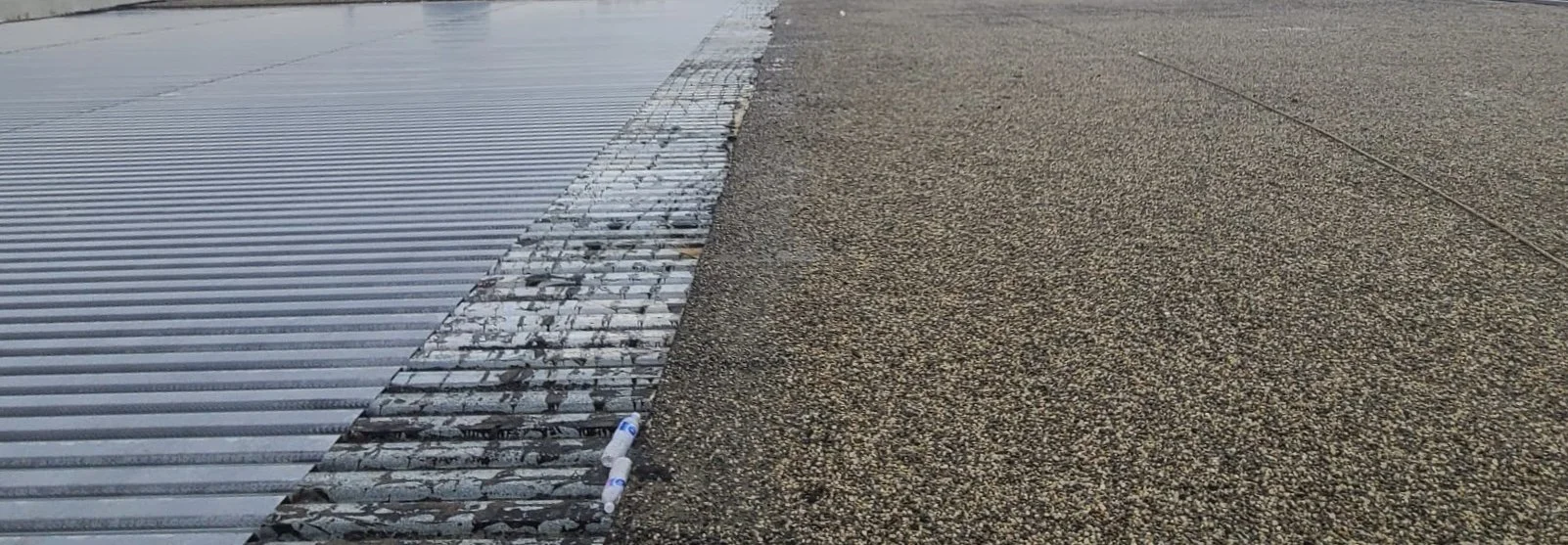This is the oldest method and most commonly found amongst older buildings; this system has been in use for over 100 years! Also known as “asphalt” or '“tar and gravel” roofs due to the use of these materials in their construction, is a more labour intensive procedure. A tried and tested method, it involves a base sheet that is fastened to the roof to flatter, workable surface proceeded by 3 to 5 layers (plies) of waterproof fibreglass sheeting sandwiched between layers of asphalt (tar). The top layer is commonly an either asphalted (but not necessarily) layer of gravel or river rock, as a protective layer against UV rays, punctures, wind, and extreme weather.
The general rule with Built-Up Roofing is that more is better. Unlike single-ply roofing, if a layer is punctured and/or water leaks through, it has to make its way through many more layers to infiltrate. Built-Up Roofing is also generally known for its low-maintenance and reliability. Gravel / river rock is also a great UV ray reflector and excellent fire-retardant.
That being said, this comes at a cost - Built-Up Roofing is a method that naturally adds more weight to a roof and may not be the choice for all building structures. Also, due to the labour and workmanship involved (including the use of asphalt and/or torching), it is generally a relatively lengthier install process and costlier. It also dependent on what the building owner chooses to fit their needs and/or budget (3/4/5-Ply, gravel, river rock etc…). Also, as mentioned the use of asphalt, specifically its smell, may or may not be off-putting to occupants; but recent advancements in technology give us the potential to minimize or even neutralize the smell of asphalt.
1000 Central Parkway West
Mississauga, ON, L5C 4R3
647-870-8345
Serving the GTA and surrounding areas
15+ years experience
liability insured + WSIB
“Working From Heights” CERTIFIED
Family owned & operated
Call us anytime: (647)-870-8345
or email us: admin@canexroofing.com


